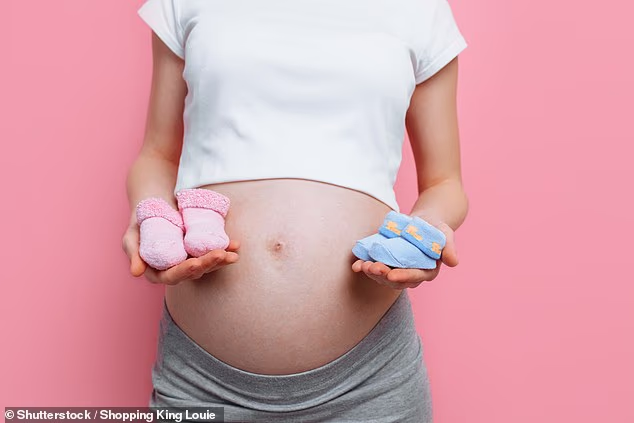Most expectant parents would believe their chances of having a boy or girl are 50/50.
But those having IVF are more likely to welcome a son, according to scientists.
Experts have revealed that male embryos grow slightly faster and are therefore more likely to be selected for transfer to the womb.
And it could explain why the odds of having a boy through IVF are as high as 56 in 100.
‘When you equate faster with better, then what happens is you favourably select male embryos’, Dr Helen O’Neill, a fertility specialist at University College London said. ‘The tools we are using are selecting males.’
While male embryos have one X and one Y chromosome, female embryos have two X–chromosomes.
One of the X chromosomes is shut down in the earliest stages of development – a crucial mechanism for genetic balancing but one which takes energy and resources.
Since embryos are selected based on how well they are growing and developing, male embryos are more likely to be picked because they grow slightly faster in the first few days after conception.
Dr O’Neill’s revelation could explain why the odds of having a boy through IVF are as high as 56 in 100
Previous studies have found that IVF leads to a slightly higher chance of having a boy, but scientists were unsure why.
The explanation could have been that the process of growing embryos in a dish made male ones more likely to survive, Dr O’Neill said.
But the new study – presented at New Scientist Live and reported in the i – suggests the sex bias occurs when embryos are selected for transfer.
Traditionally, doctors have always graded embryos for quality by looking through a microscope.
Now, some fertility clinics also offer the use of AI as part of the grading process, using timelapse videos made as the embryos develop.
Dr O’Neill’s team carried out a study to determine how likely male or female embryos were to be chosen – both by doctors or two different AI systems. They tested 1,300 embryos where the sex was already known through genetic testing.
Analysis revealed that when doctors did the selection, they rated 69 per cent of male embryos as good quality compared to 57 per cent of the female ones.
One of the AI systems had a slight sex bias towards boys, while the other rated male and female embryos about the same.

During IVF, sperm is added to several eggs in a dish with the hope of creating as many embryos as possible. After around five days, the embryo which looks the healthiest is chosen for transfer to the womb
Dr O’Neill said the difference in development speed is so small that it could not be used to deliberately choose male or female embryos.
Sex selection during IVF is also not allowed at UK clinics unless the parents have a genetic medical condition that affects only one sex.
A previous study, carried out by scientists from Harvard University, found that some women are much more likely to have children of only one sex.
For their research, the team analysed data from more than 58,000 mothers who had given birth to at least one child. Their results revealed that maternal age plays a key role in determining the sex of the babies.
Women who were older than 28 when they first gave birth had a 43 per cent chance of having children of only one sex.
But women who were younger than 23 when they first became a mother only had a 34 per cent chance of having children of only one sex.
‘Older maternal age may be associated with higher odds of having single–sex offspring, but other heritable, demographic, and/or reproductive factors were unrelated to offspring sex,’ the researchers explained.
By
Source link




Leave a Reply